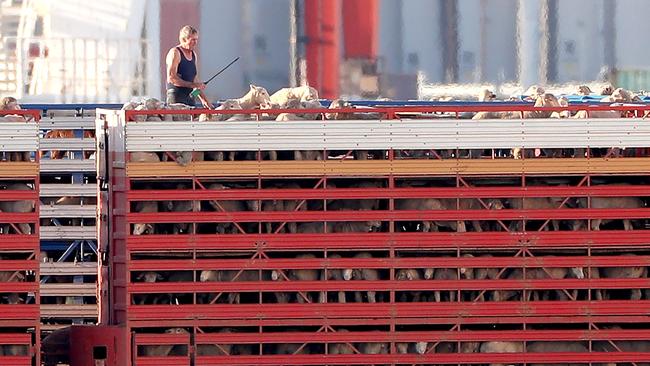Moves to ban live export in WA could impact eastern states
Eastern states producers might think the WA live export ban is irrelevant but analysts say it could hit home harder than they think.
Producers from both the west and east coast will feel the fallout from any ban of live sheep exports by the Federal Government.
And some believe it could force the West Australian sheep industry out of its position as the third biggest state for sheep population to just a fraction of its current size.
Thomas Elder Markets analyst Matt Dalgleish said the West Australian sheep industry had been given notice that while live exports would still operate for the current term of the federal government, there was an end date for the practise.

This, he said, could force some Western Australian producers to think it was all too hard, especially mixed farming operations which had the option to grow more crop.
The Western Australian sheep industry, where live export plays a key role was exacerbated due to the lack of processing capacity.
“The WA sheep industry could go the way of the Queensland industry where it all became too hard and really in that state, it became irrelevant,” Mr Dalgleish said.
“We could see the WA sheep population go back to three million head (currently about 14.4 million) with only the die-hards doing it, but it won’t be a relevant part of the industry at that size.”
While sheep producers in southeast Australia seemed to regard the live export ban as a West Australian issue, Mr Dalgleish said low prices for stock could see them transported across to eastern states to kill.
“In the past, extended periods of price discounts (Western Australia compared to eastern states) saw flows of sheep from west to east,” Mr Dalgleish said.
“But with fuel prices now, they are working at a cost of $40-$50 a head to get them across the Nullabor, so that would translate to a 150-200c/kg discount in WA compared to eastern states to make it worthwhile for processors to do this.”
West Australian sheep producer David Slade from Mount Barker runs about 20,000 sheep and said there were challenges for sheep producers even with the live export trade operating.
“We have just two main abattoirs here and don’t see the competition you do in the eastern states for sheep,” Mr Slade said.
“It is short sighted to think that capacity to kill will increase — there is a battle to get labour and even at the moment, WAMMCO is 30,000 behind in its kill right now.”
Mr Slade said West Australian growers received more for their grain than eastern states, and less for their sheep already, and any further decreases in sheep value would see mixed farmers turn away from livestock.
“If we don’t have live export, then you can guarantee that more and more sheep will be going across the Nullabor and eastern states prices will go down,” he said.
“There will also be people turn away from sheep.”




